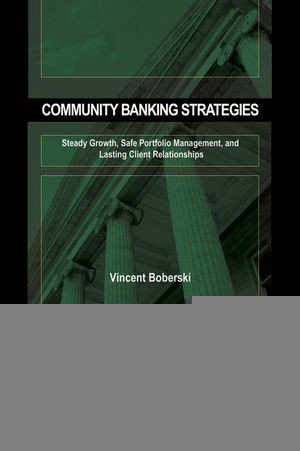

Most ebook files are in PDF format, so you can easily read them using various software such as Foxit Reader or directly on the Google Chrome browser.
Some ebook files are released by publishers in other formats such as .awz, .mobi, .epub, .fb2, etc. You may need to install specific software to read these formats on mobile/PC, such as Calibre.
Please read the tutorial at this link: https://ebookbell.com/faq
We offer FREE conversion to the popular formats you request; however, this may take some time. Therefore, right after payment, please email us, and we will try to provide the service as quickly as possible.
For some exceptional file formats or broken links (if any), please refrain from opening any disputes. Instead, email us first, and we will try to assist within a maximum of 6 hours.
EbookBell Team

4.4
82 reviewsWith Community Banking Strategies, author Vincent Boberski, a financial professional who has spent years working with senior management and the boards of directors at local banks, skillfully reveals how community banks can compete against bigger institutions in the wake of the most significant financial crisis since the 1930s.
Chapter by chapter, he offers practical advice on many of the most important issues in this area, including portfolio management, balance sheet management, and dealing with interest rate and credit cycles. Along the way, Boberski also offers in-depth insights on establishing and encouraging the lasting client relationships that produce the most essential piece of the banking business: focusing on increasing core deposits, which is at the heart of any good local bank.
If you want to gain a better understanding of the strategies that could consistently lead to success in this field, this book is the best place to start.Content:
Chapter 1 A New Era for Community Banking (pages 1–28):
Chapter 2 Historical Credit Crises and What's Different Now (pages 29–36):
Chapter 3 Valuations and Lessons from the Equity Markets (pages 37–44):
Chapter 4 Liabilities and Capital (pages 45–57):
Chapter 5 Managing the Balance Sheet through Different Interest?Rate Cycles (pages 59–72):
Chapter 6 Investments and the Wholesale Balance Sheet (pages 73–103):
Chapter 7 What Banks should Ask of their Brokers (pages 105–113):
Chapter 8 Tax Efficiency: As Important as Operational Efficiency (pages 115–129):
Chapter 9 Derivatives as a Way to Manage Balance Sheet, Earnings, and Business Risk (pages 131–158):